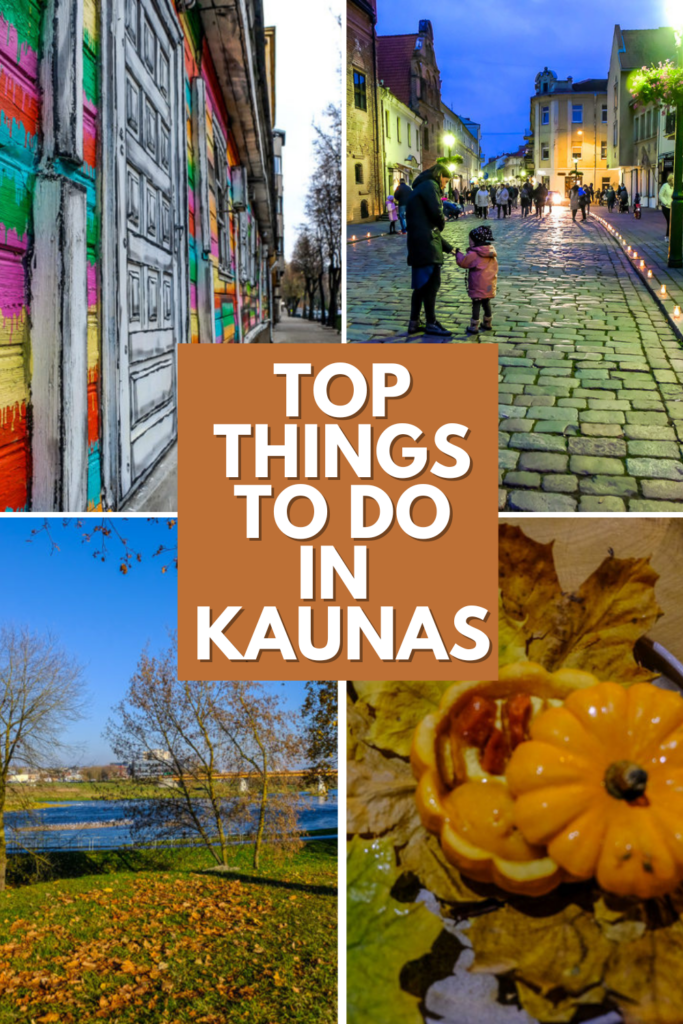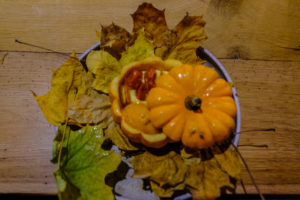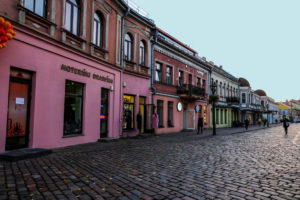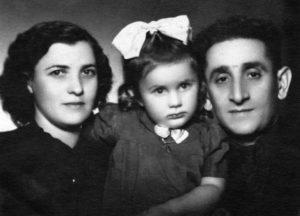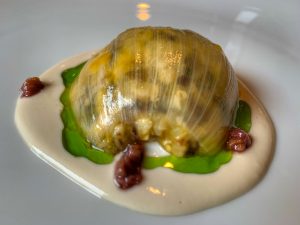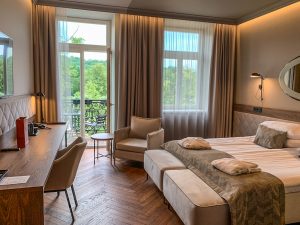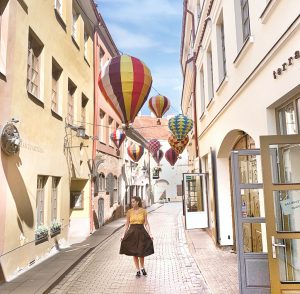In September, I received a message from Michal, a charming travel blogger, who asked me if I’d like to join her on a trip to Kaunas, Lithuania. She was invited by the Kaunas office of tourism, who suggested she invite another blogger on the trip and she thought of me 🙂 As you can see, I took her up on her offer.
And so it was, I took Ryanair’s first flight from Tel Aviv to Kaunas with Michal in late October.
If you want to read more extensively about Kaunas, I’ve written a useful post with all the information about Kaunas, as well as recommendations for all the restaurants we’ve visited. However, if you’d like a concentrated post about restaurants, you’ll find it here “Recommended restaurants in Kaunas post.”
Where to stay in Kaunas?
We stayed at the Best Western Santakos, a 4-star hotel with a fantastic location, situated right between the new and old towns—perfect for exploring the city on foot. The hotel’s design is more traditional, resembling a castle with winding corridors, which might not suit those who prefer modern or boutique-style accommodations. The room was spacious and comfortable, though navigating the large hotel could be a bit challenging.
Breakfast was decent, offering a standard selection of bread, spreads, eggs, sausages, cheeses, and pastries, though the quality wasn’t exceptional. While the hotel features amenities like a sauna and a small indoor pool, we didn’t have time to use them. The staff was friendly, and the rooms were always clean.
Overall, this hotel is a great choice for travelers seeking a convenient and reasonably priced option, though it may not appeal to those looking for a boutique or luxurious experience.
Here are some up to date reviews on the hotel on TripAdvisor and more reviews and deals on Booking.com.
Tour of the old town
Our amazing guide Linas came to meet us at the hotel and take us on a tour of the old town. We passed side streets like Mapu Street (Map), and visited the municipal building – The city hall (Map) which used to serve as the mayor’s office (1920 – 1940) and today is a wedding spot (In a room called The White Swan).
It also has a balcony from which important people who visited the city speak (Facing a large square), where the basketball players come after a victory, as well.
We also walked along the rivers crossing the city, one of which is the largest in Lithuania and crosses other countries as well, and the other is the second largest). Where the two rivers meet is the place where Kaunas was first settled.
Note:
There are also tip-based group tours you can join, such as this two-hour English tour. Alternatively, you can contact the Kaunas Tourism Office to book a private tour, like the one we took. or go to the landmarks I’ve mentioned on your own time.
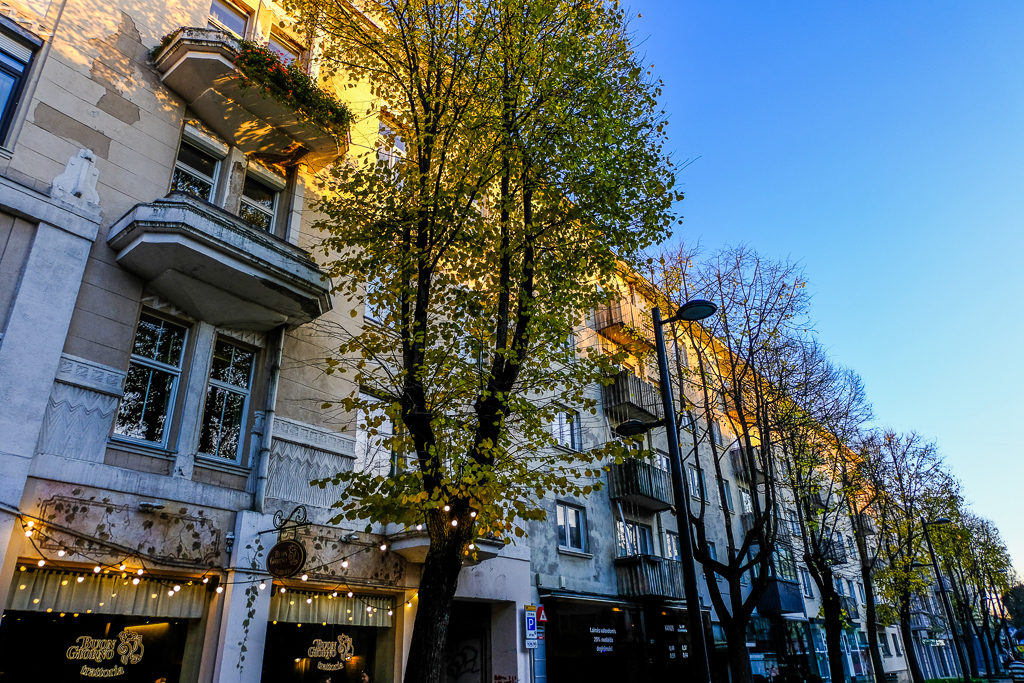
Other tours in Kaunas
Kaunas Old Town: 2-Hour Ghost Tour
Kaunas Tour: Love Stories
Self-Guided Secrets of Kaunas Exploration Game
Kaunas Castle
We visited the castle area (Map), entered the church by the castle. This church wasn’t destroyed in WWII, as it’s not in the town center, but at the time the Soviet army decided to turn it into a training facility for the Red Army and after a few years, when they established a larger training ground, they returned it.
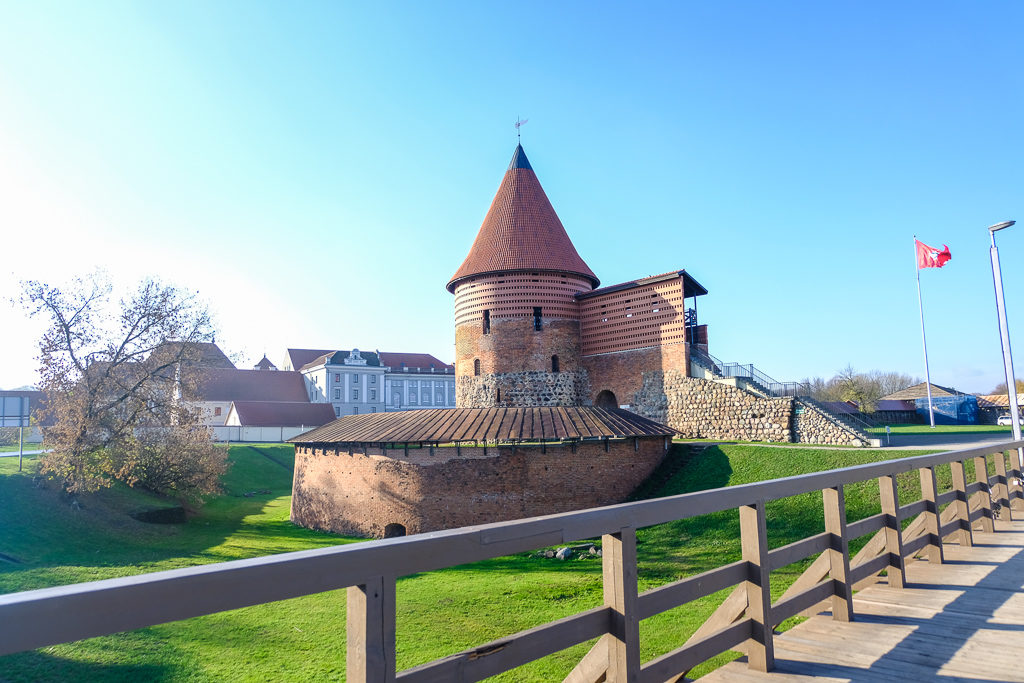
Music museum
From there we went to the Kaunas City Museum, Folk music branch – a cute museum, fit for children and adults alike. You can try many strange musical instruments there. Many of them are simple to make and it’s cool to see how such a simple instrument can produce unique sounds. The employee there also demonstrated many instruments for us and you can listen to Lithuanian music, as well.
On the first floor are interchanging exhibitions and on the second floor are the instruments.
When going up the stairs there’s music and lights that appear gradually. It’s a museum worth visiting.
Address: L. Zamenhofo g.12
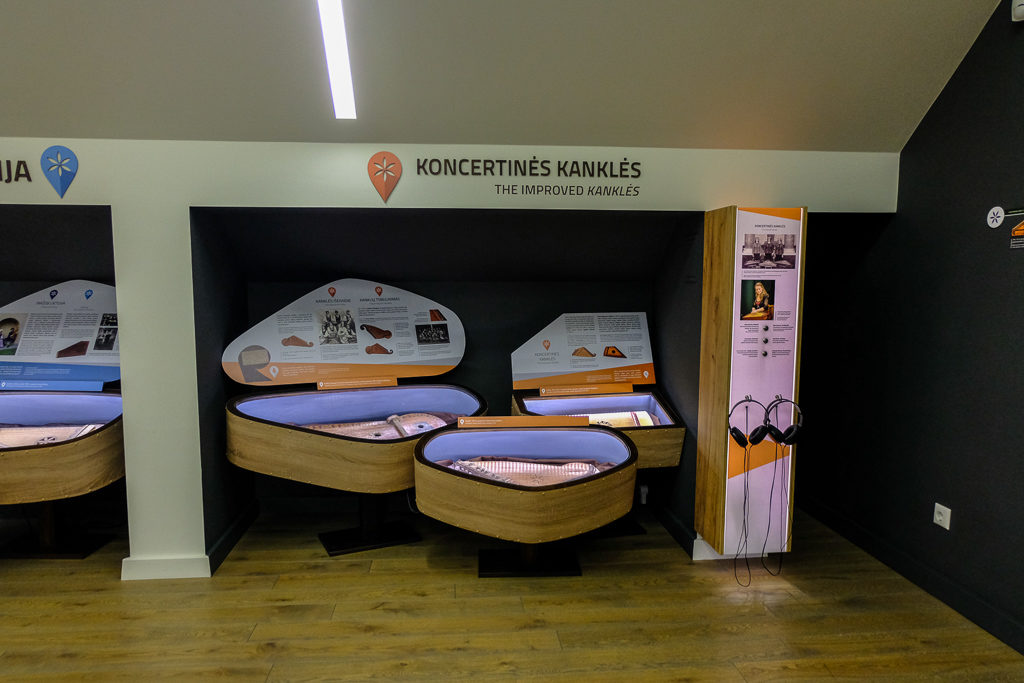
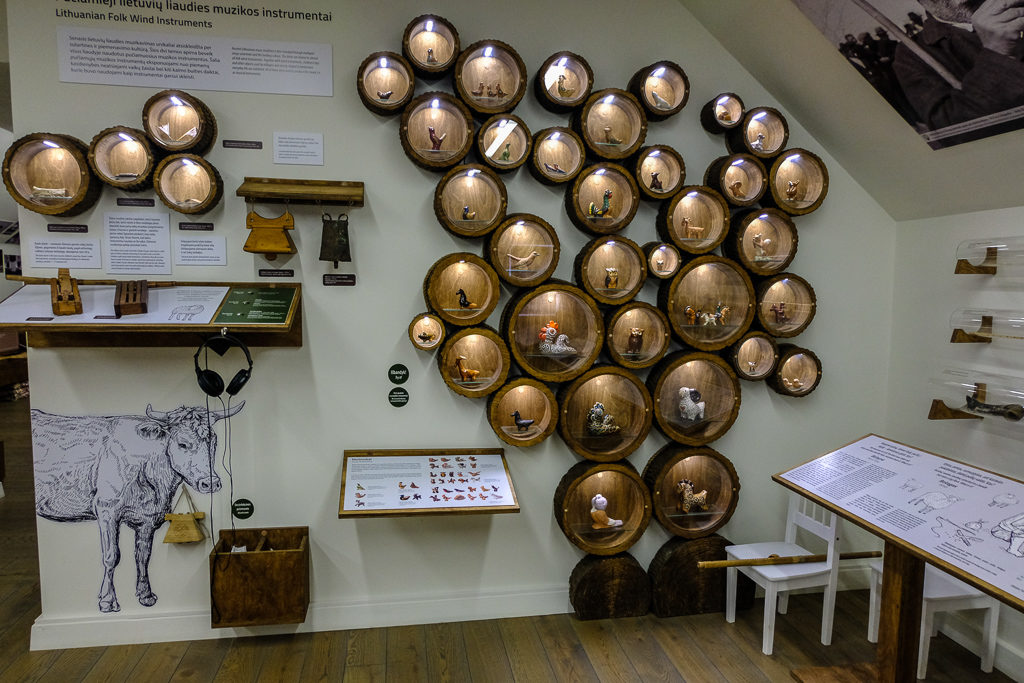
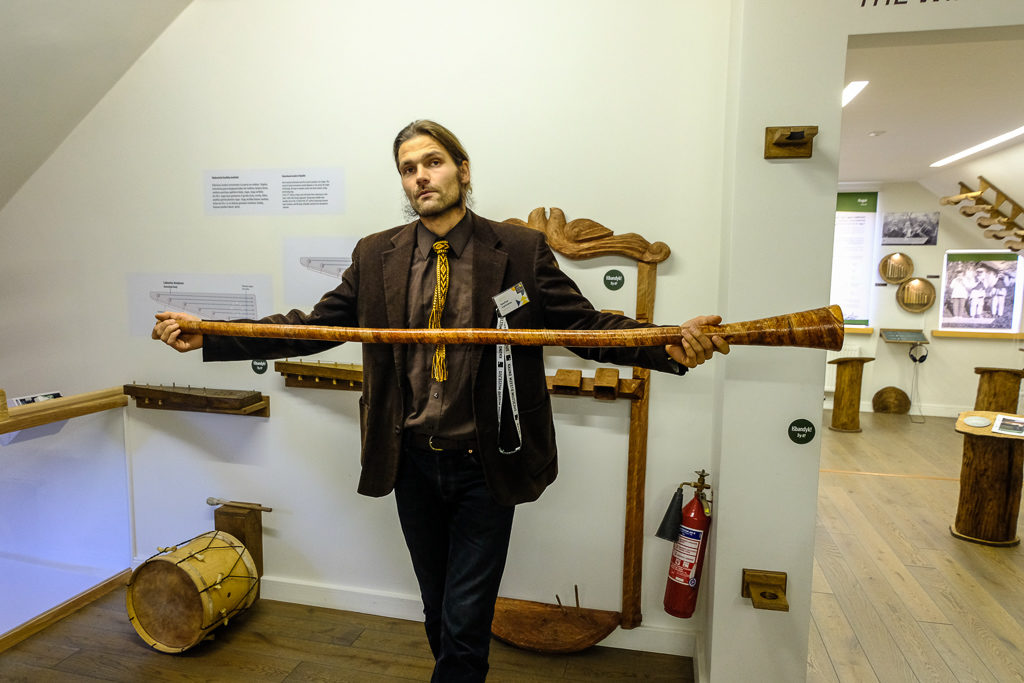
Jaukūs namai store
A store selling art and linen products, Jaukūs namai. A unique store with many handcrafted flax products, as well as art and unique jewelry. They also give workshops about making linen and the owner showed us the process (Apparently, it’s a long process with many steps). If you’re looking for a special gift for someone or something for your house, a piece of clothing or jewelry – this is a shop worth a visit. Map.
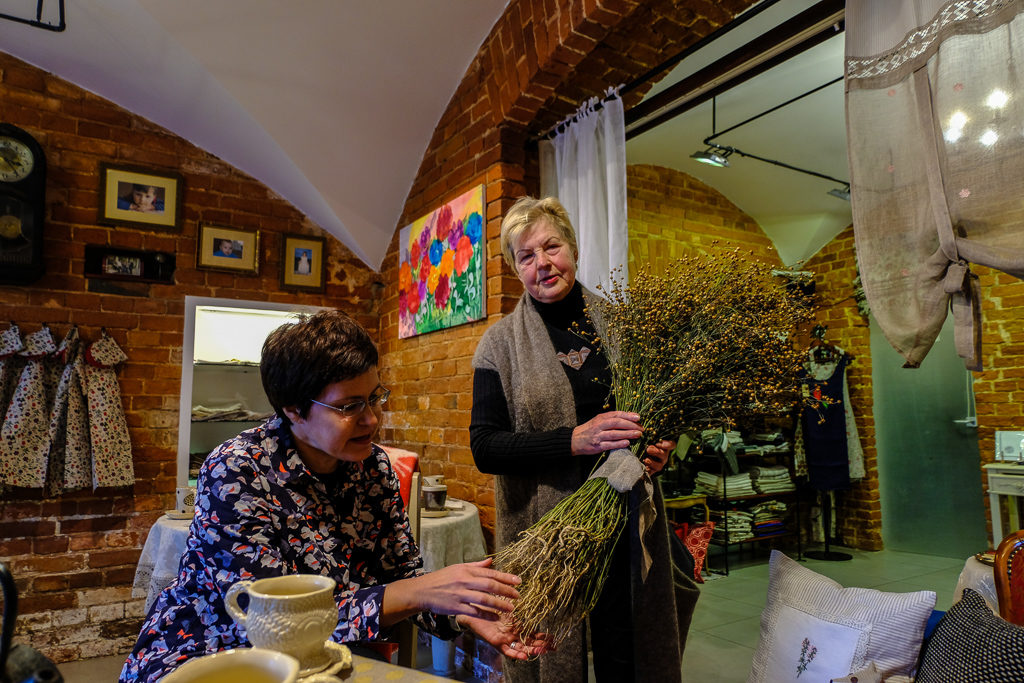
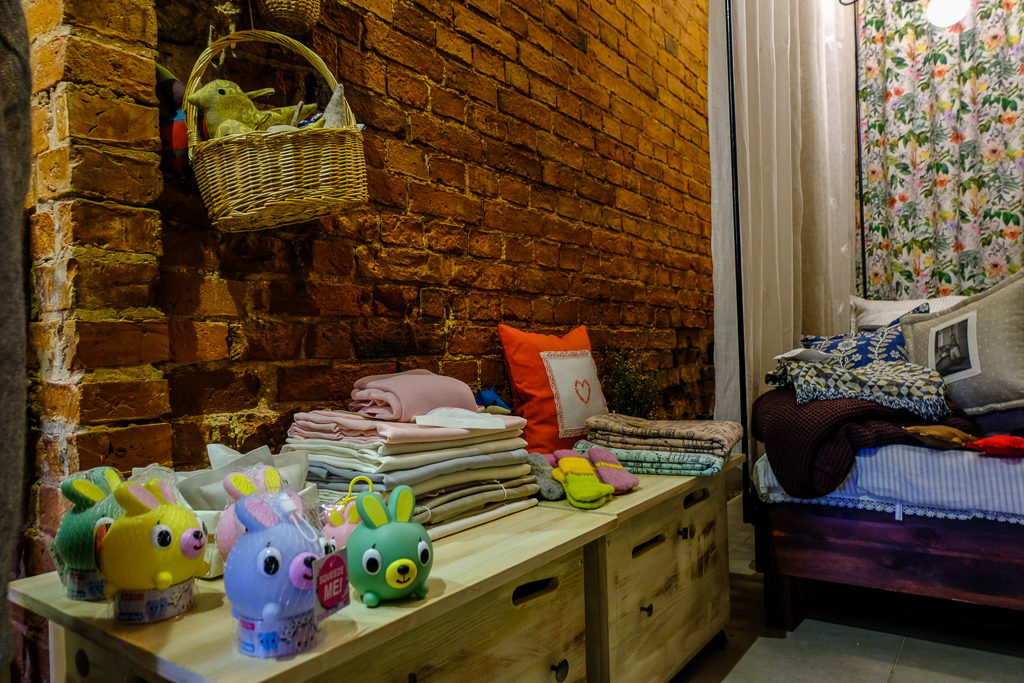
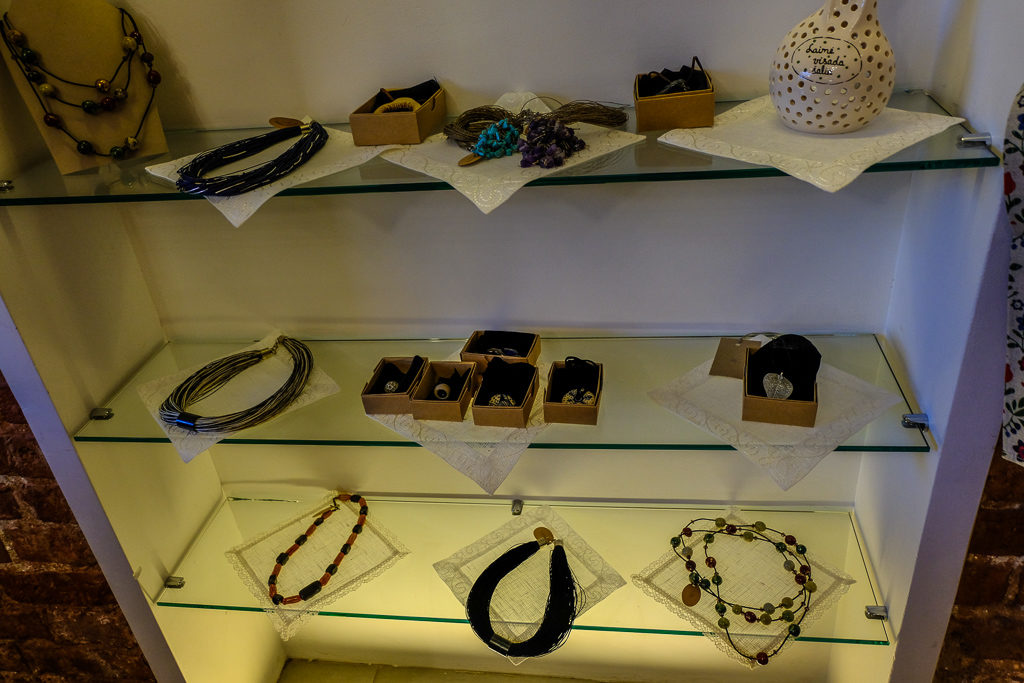
Gallery in the yard
We passed several streets with graffiti and Linas told us about each painting. The place I liked most was a gallery in a living compound’s yard where we got lucky to see the artist behind the paintings, Vytenis Jakas, who also lives in the compound. He explained to Linas about the paintings and Linas translated for us. The gallery is called Kiemo galerija (Yard Gallery) (Map). There’s a wall he just started drawing on and it has a plan showing what the painting is going to be – It’s about to be the people living in the building with a characteristic of each one.
For example, a cat that used to belong to one of the neighbors and died. The cat will be drawn exactly in front of the owner’s window, so that he can see him from his window. Some of the works are about Lithuania’s painful history. The gallery is trying to preserve the architecture of the 19th century.
It’s a place you have to visit while in town. It’s so special and interesting, with so much history and so many stories behind each piece of art.
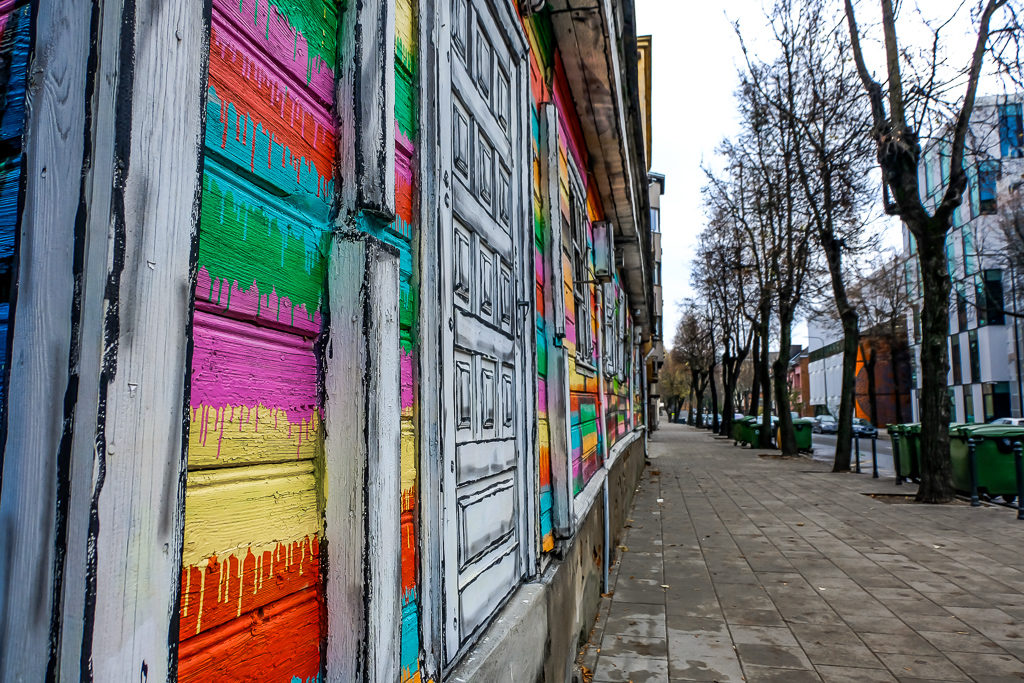
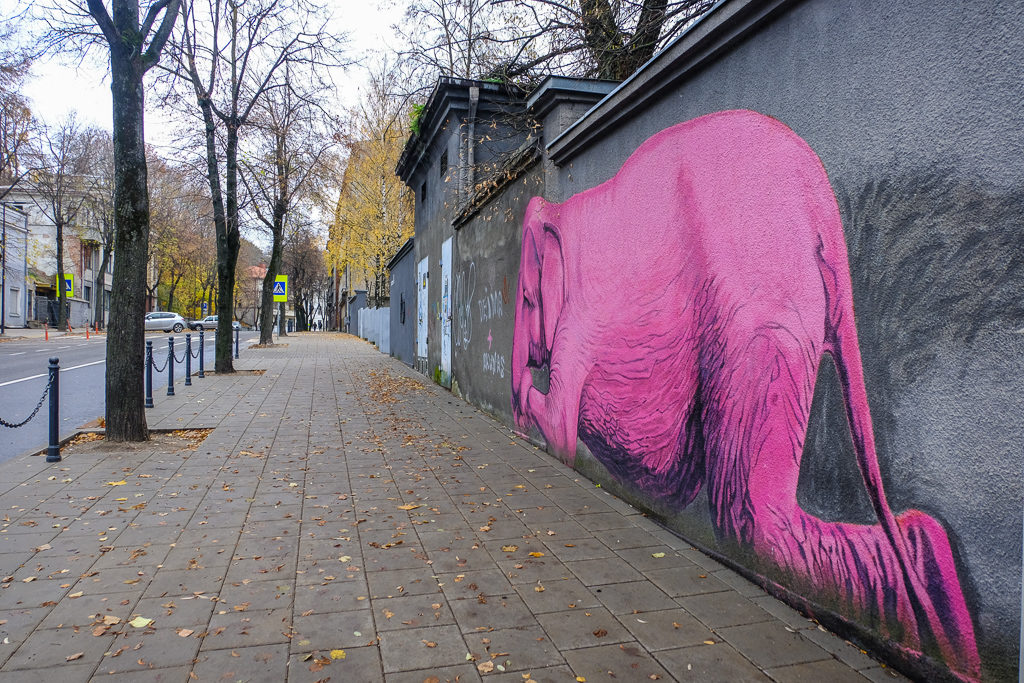
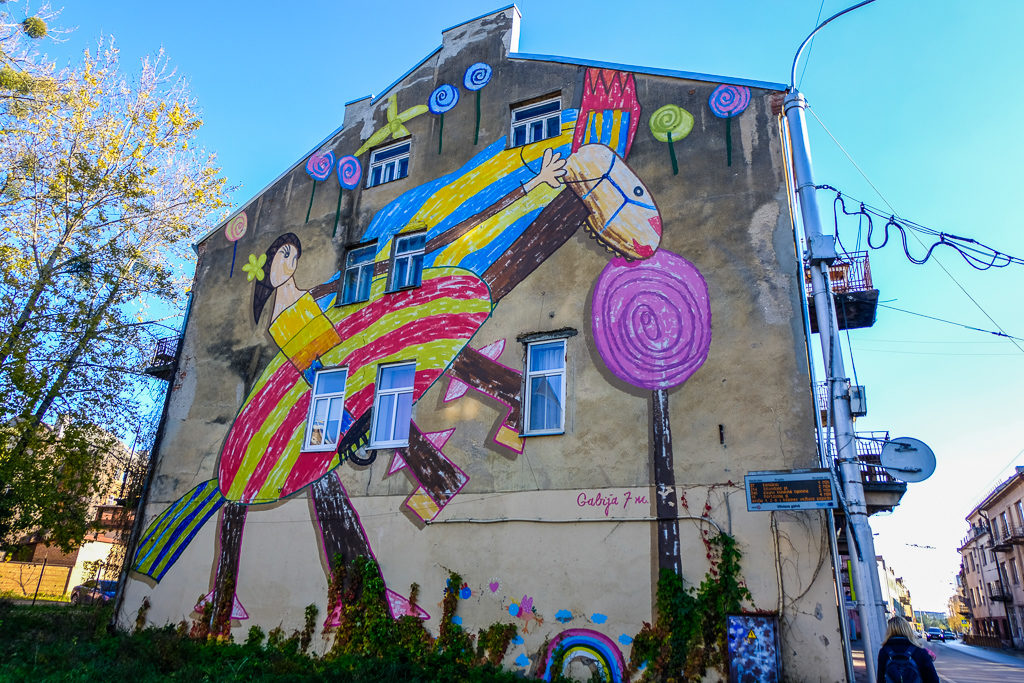
Viewpoint of the Kaunas city
From there, we went to a vantage point over the city from the top floor of the church. To reach the church you must climb 250 stairs (There used to be a cable car but it’s under renovation). At the church you can take the elevator up or the stairs. The view of the city was beautiful despite visibility not being perfect that day with some fog over the city.
Map.
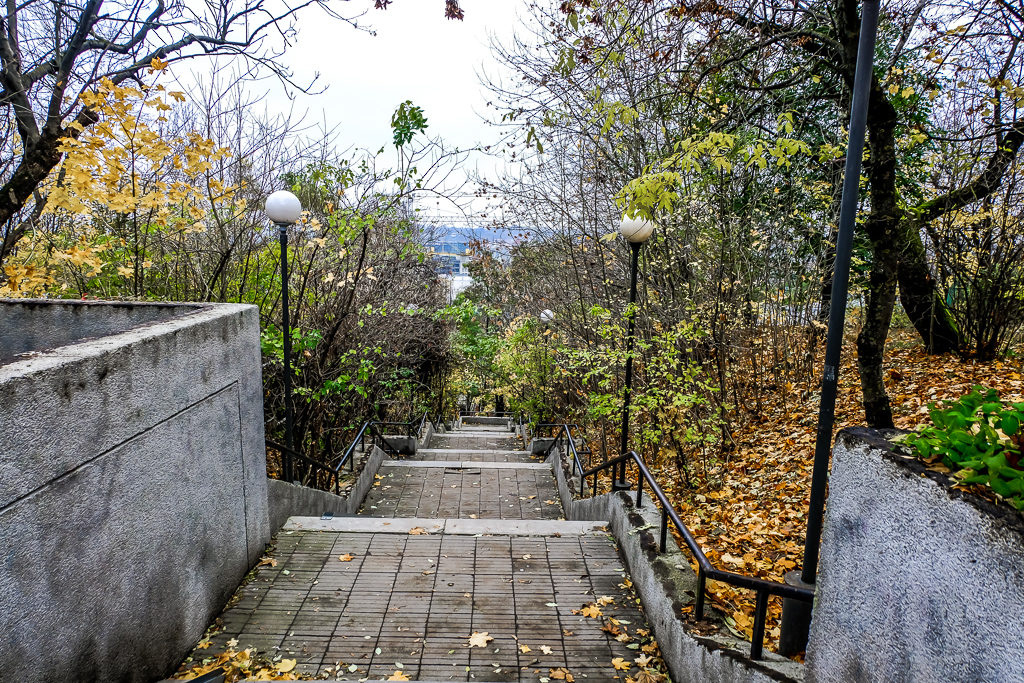
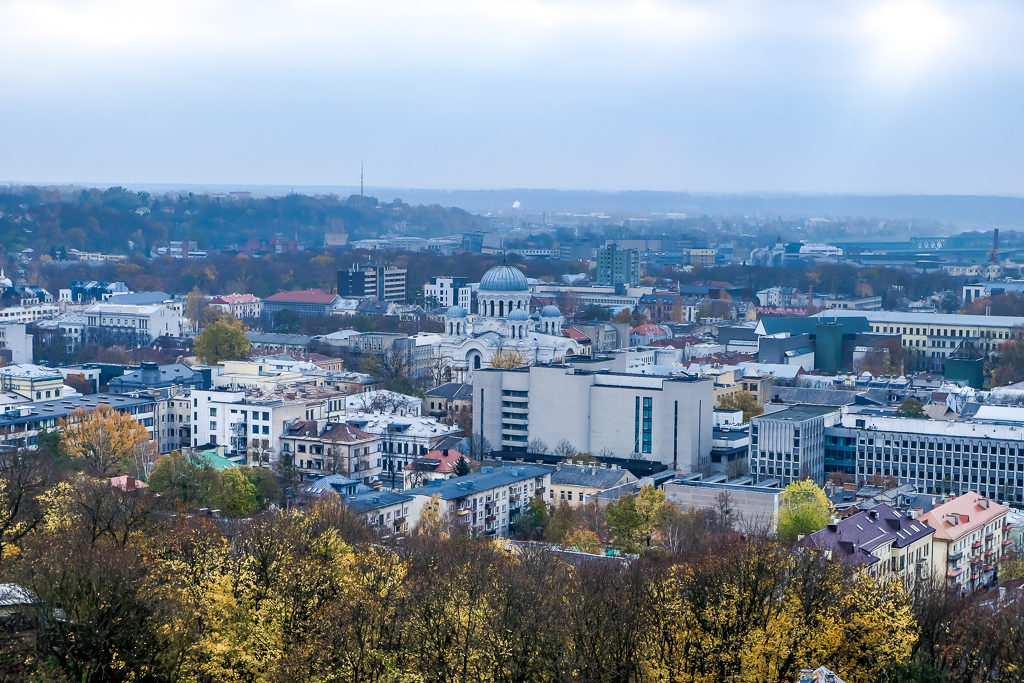
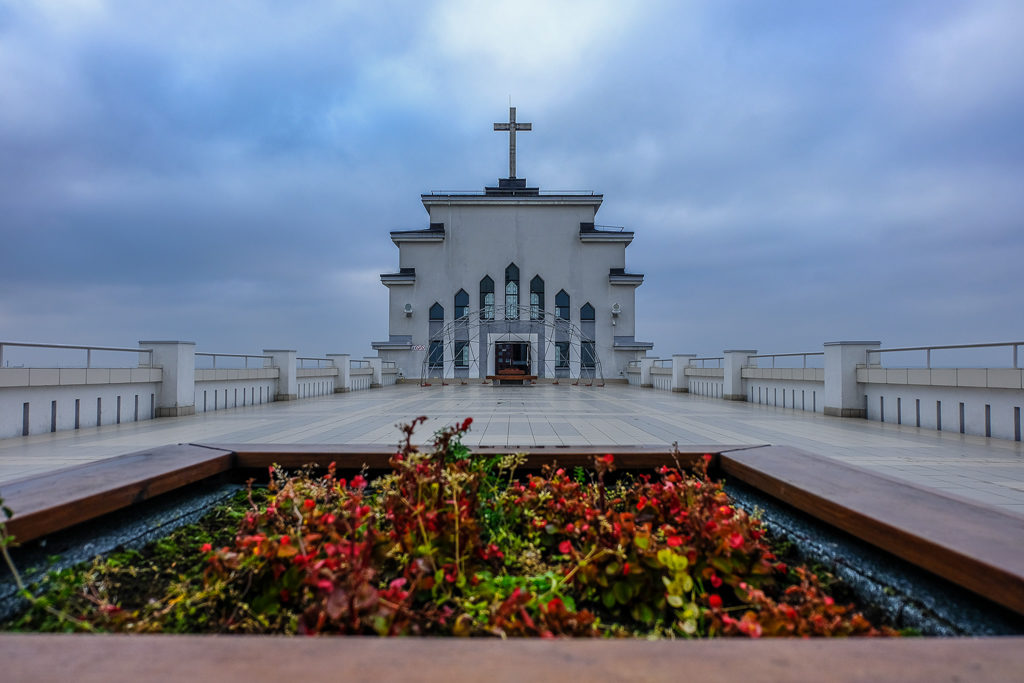
Coffee break and avenue
We decided to have coffee in the old town, at Vero café – a chain of local cafés, you’ll find many locations of theirs in town. (Map)
📣 Wait! Before you keep reading...
I just want you to know that I absolutely love hearing from you! If you've already visited this destination – share your experience in the comments, and if you have any questions or hesitations about planning your trip – I’m totally here for you.
And if you discovered something new along the way – a change in opening hours, a hidden gem worth mentioning, or anything that should be updated – it would really help me (and future readers!) keep this post as accurate and useful as possible 💛
And don’t forget to let me know if this post helped you – nothing makes me happier than knowing I helped you plan an unforgettable trip!
Click here to leave a comment
Additionally, Vilniaus street itself is a beautiful avenue with many restaurants, bars, cafés and stores and is worth a visit.
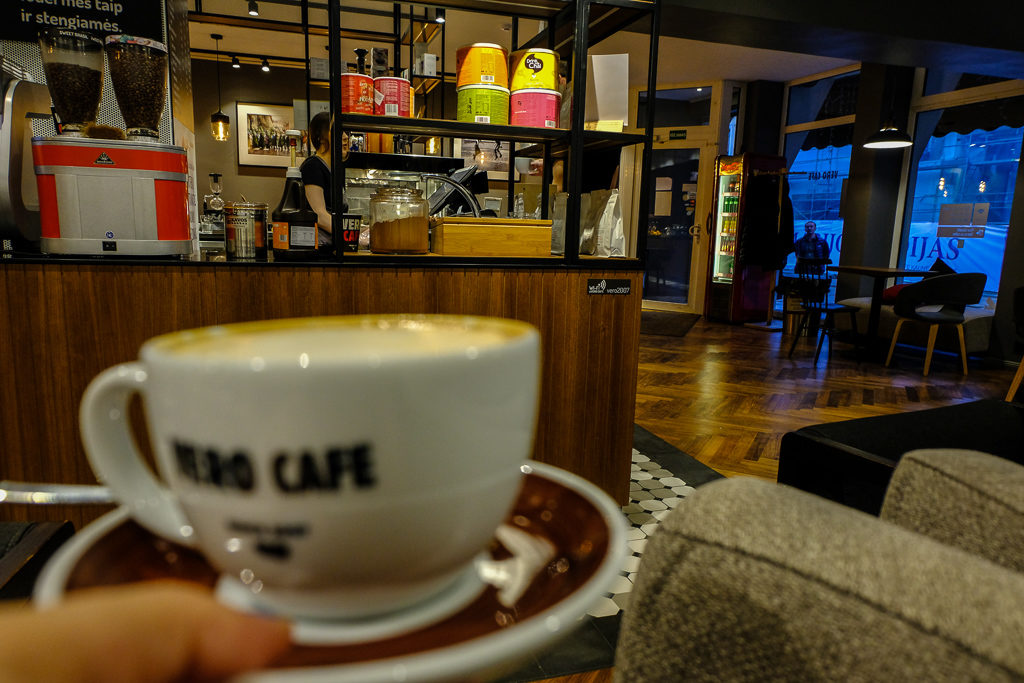
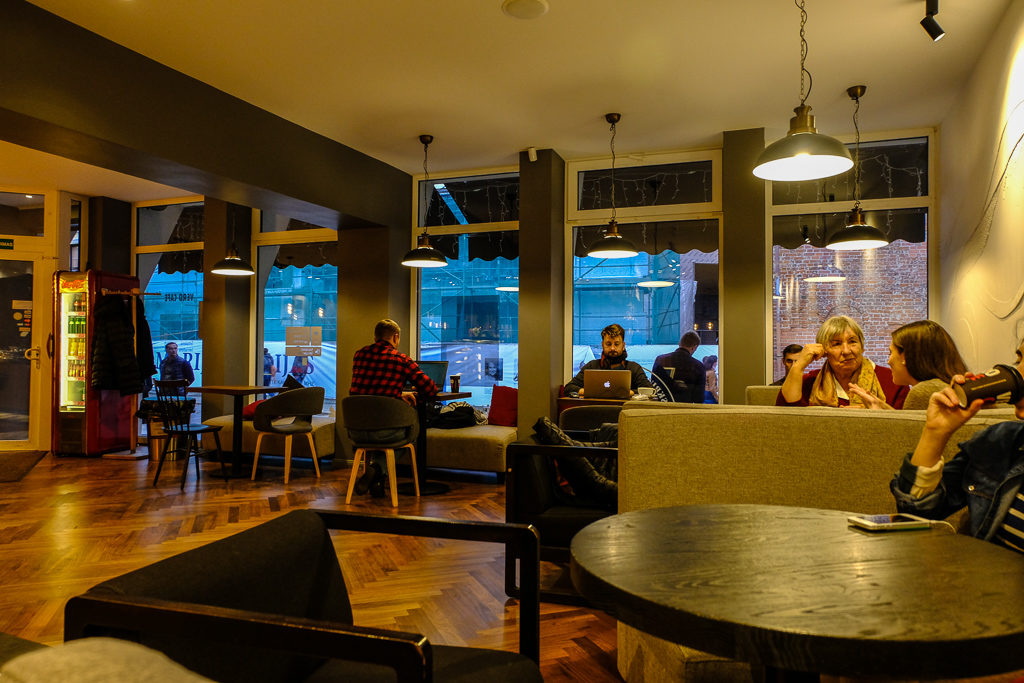
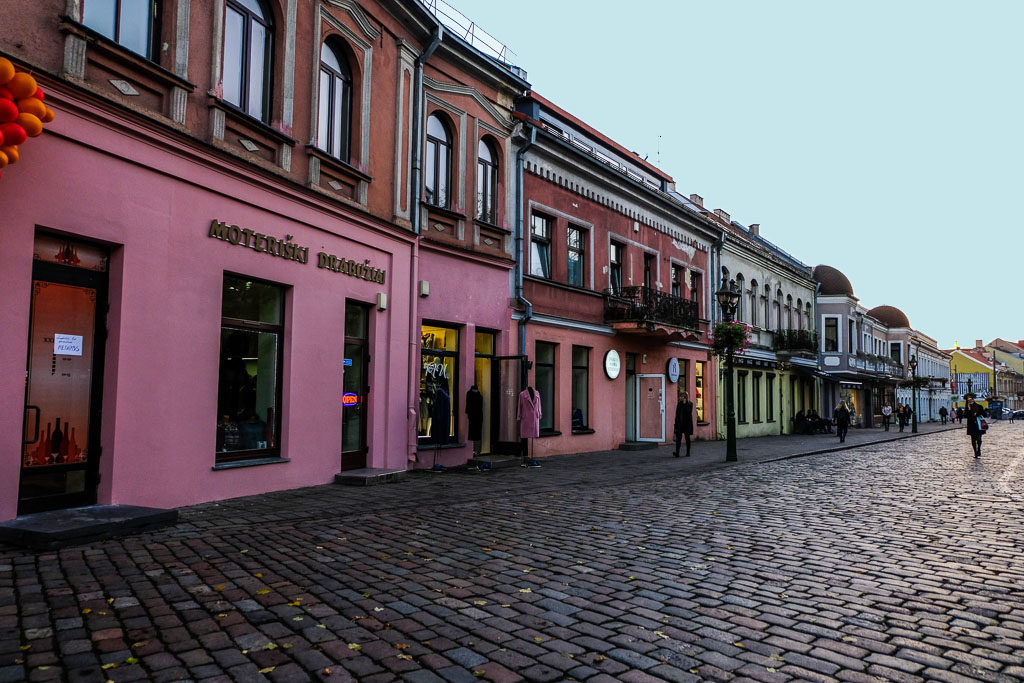
Candle-Lighting Tradition on All Saints’ Day
If you visit Kaunas on November 1st, as we did, you can experience a beautiful tradition celebrated annually in honor of All Saints’ Day. In Lithuania, and especially in Kaunas, this unique custom blends Christian elements with local practices. On All Saints’ Day, observed on November 1st, it is customary to light candles in memory of departed loved ones. In the evening, locals gather at cemeteries to place candles on family graves. The cemeteries are transformed into a stunning scene, illuminated by thousands of flickering candles, creating a peaceful and enchanting atmosphere.
This tradition is not directly connected to the American-style Halloween with costumes and trick-or-treating. Instead, it focuses on remembrance, reflection, and honoring the deceased. For the locals, it is a time of contemplation, paying respects, and coming together as a family. This tradition offers a glimpse into Lithuanian culture, where spirituality, history, and reverence for tradition are deeply intertwined.
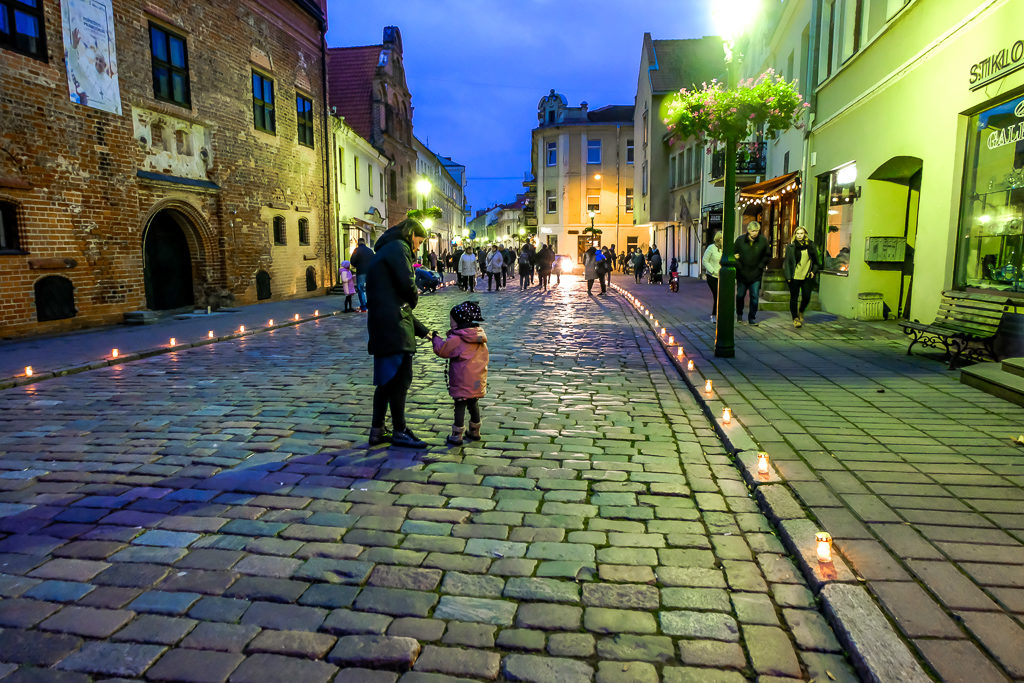
Gate to the Jewish ghetto
Linas came to pick us up at the hotel and we rode with him to several locations following the Jewish history of the city (Reachable by bus).
We started the tour at the gate to the Jewish ghetto (A building you can’t miss), that was made by the same artist from Kiemo galerija (Yard Gallery) (Finished the art piece three months ago). The piece has many broken mirrors representing the broken lives from the past of this place. Map.
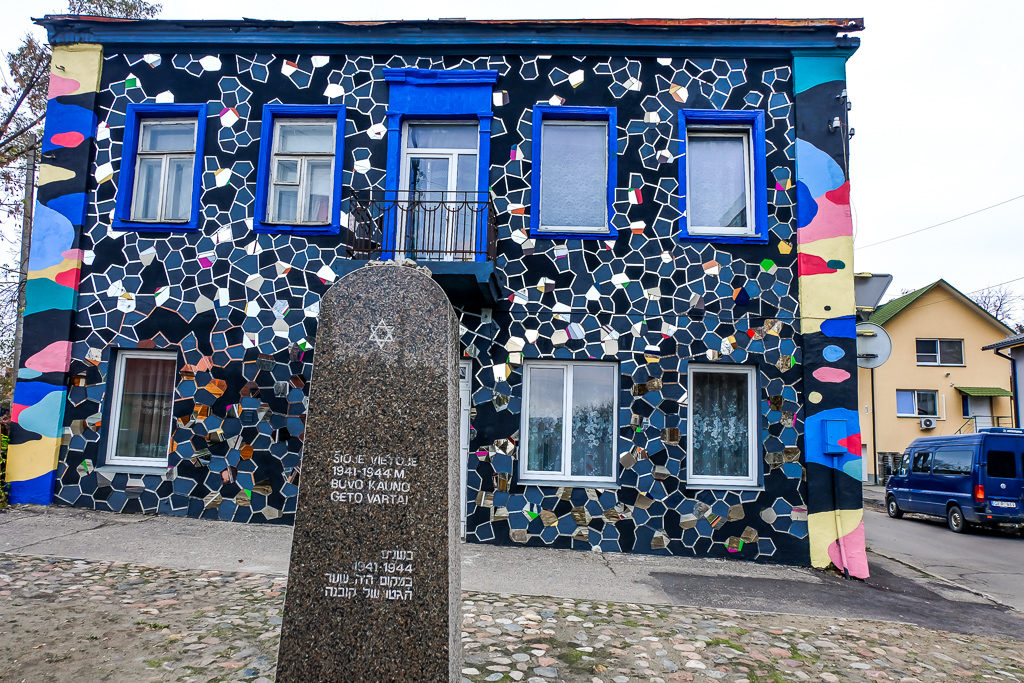
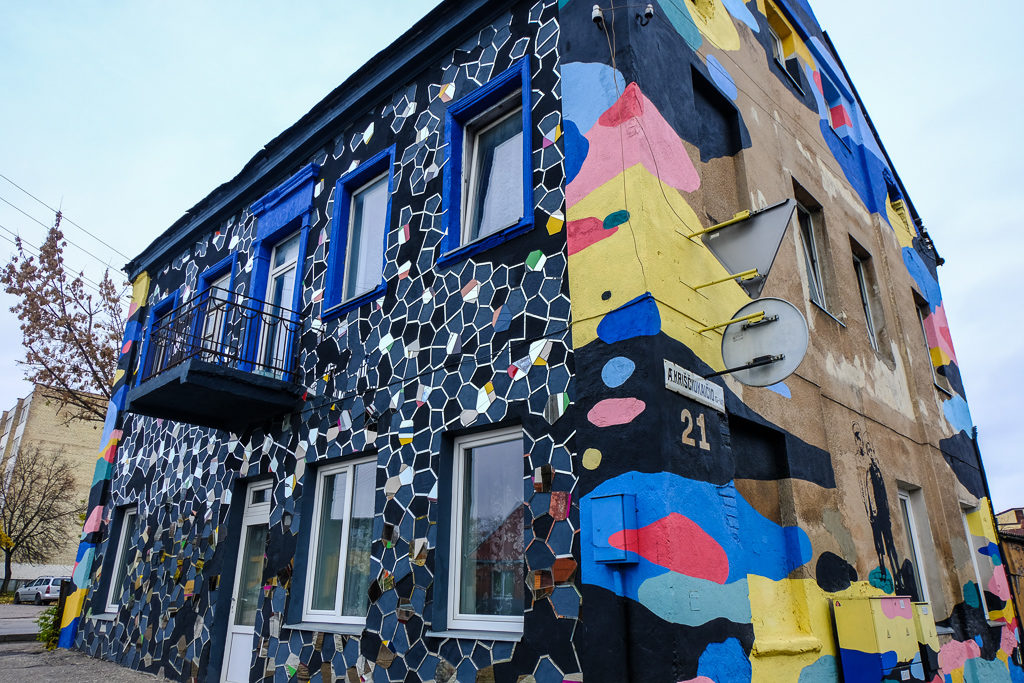
Orphanage and graveyard
We moved on to the orphanage that opened outside the gates of the ghetto and served as an orphanage even before the second world war. During the war the pediatrician Pioters Baurelis, with a team helping him, saved children from the ghetto. Map
By the orphanage we visited the Jewish graveyard. Today it doesn’t hold any graves (Only those on a hill that’s hard to reach), as the Soviets decided to destroy everything there after the war and only left two memorials in memory of the Jews murdered by the Nazis. Map.
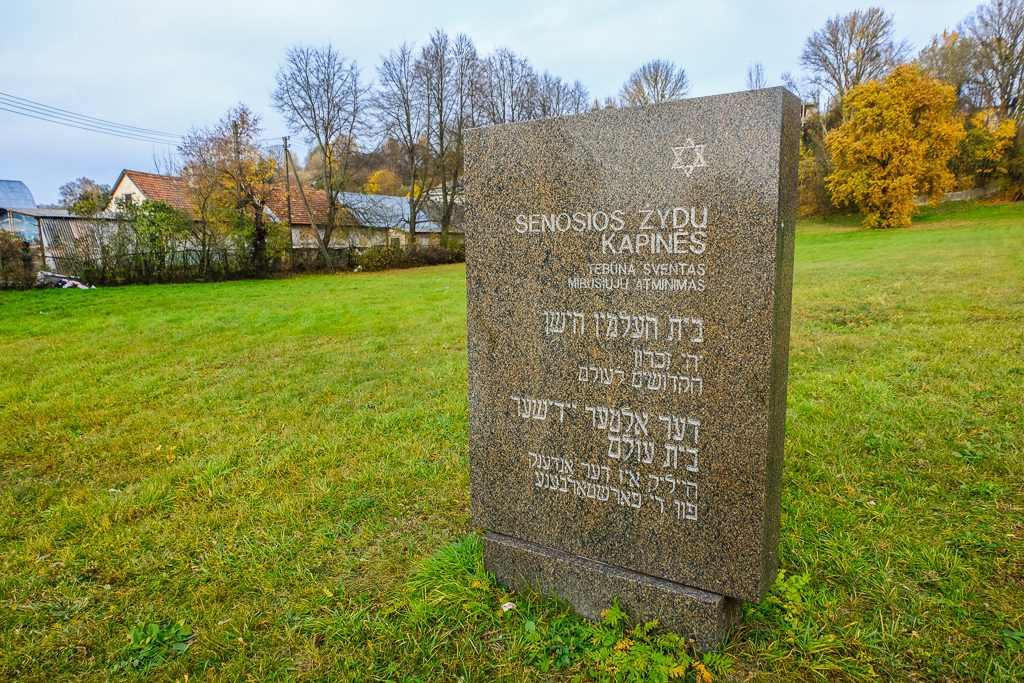
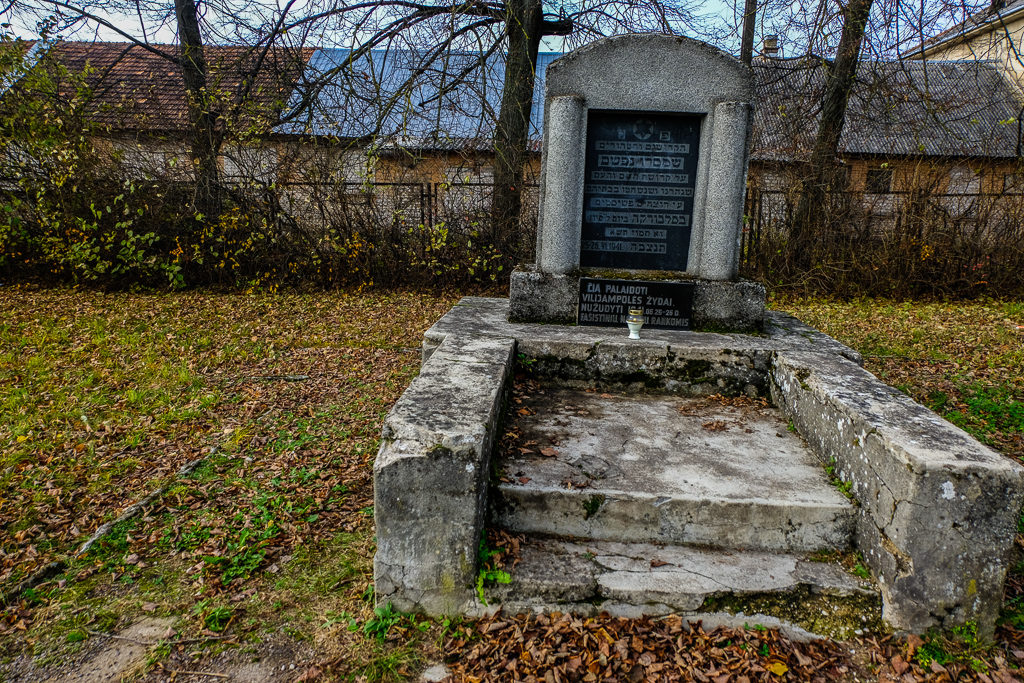
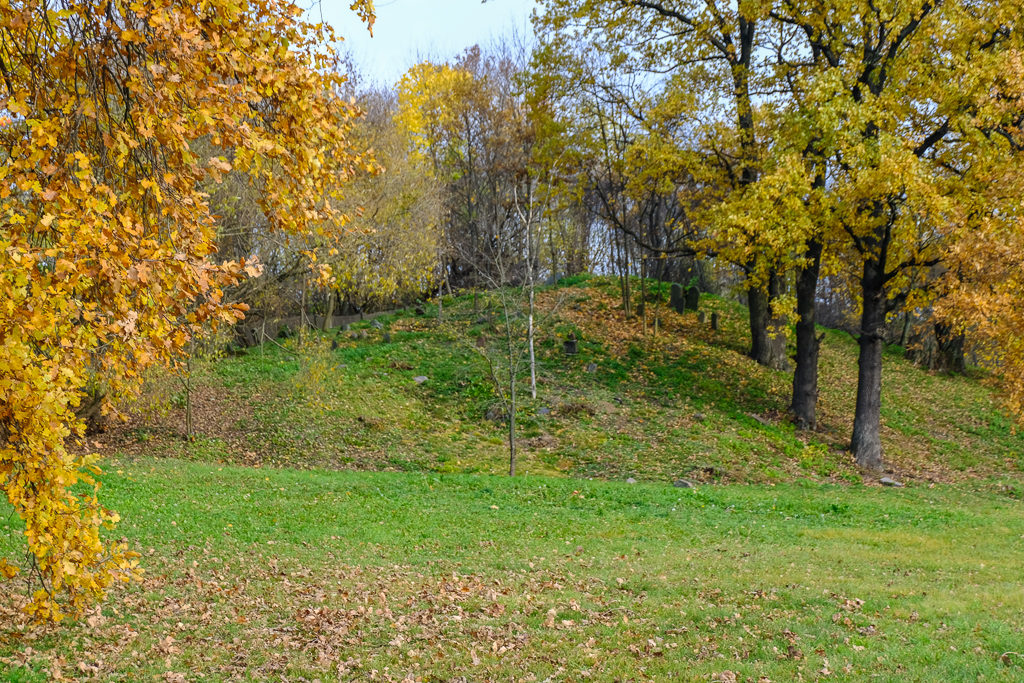
The ninth fort
The ninth fort, It’s a fort established in the 19th century – to protect the city, but before WWII it was transformed into a prison by the soviets and during the war became a concentration camps for the Nazis. 50 thousand people were murdered there. There are two museums. Both portray the horrors the city’s been through under the Soviet and Nazi occupation.
The fort was built in 1913 and took 10 years to manually build it. During the war, 62 jews managed to escape (The guide at the fort took us on the route they escaped by). Part were murdered in the forests and some managed to survive. One of them even wrote a book about the escape from the fort.
The tour there is very hard and definitely not the best part of the trip, but I think it’s an important part of traveling to places like this. To remember what was and learn to appreciate what we have now.
Due to a tight schedule the tour was only an hour and we didn’t get to hear everything, but it’s definitely worth dedicating at least two or three hours to this place. By the fort is a large memorial in memory of the murdered and several smaller memorials as well. The memorial was established in a court where people were murdered. On a single night, 10 thousand Jews were murdered in it. Map.
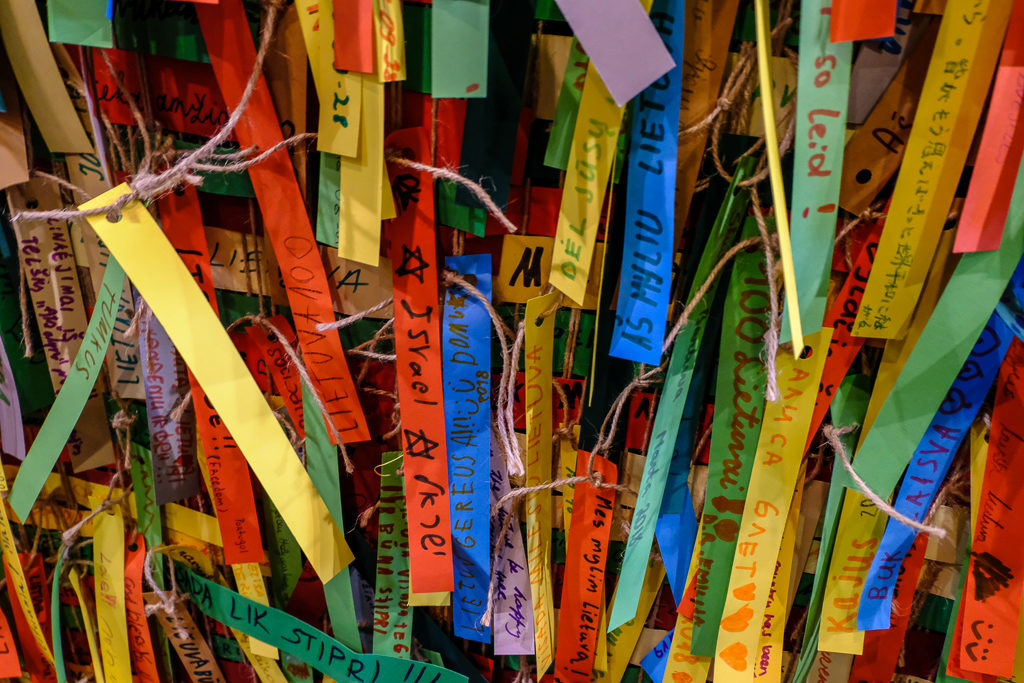
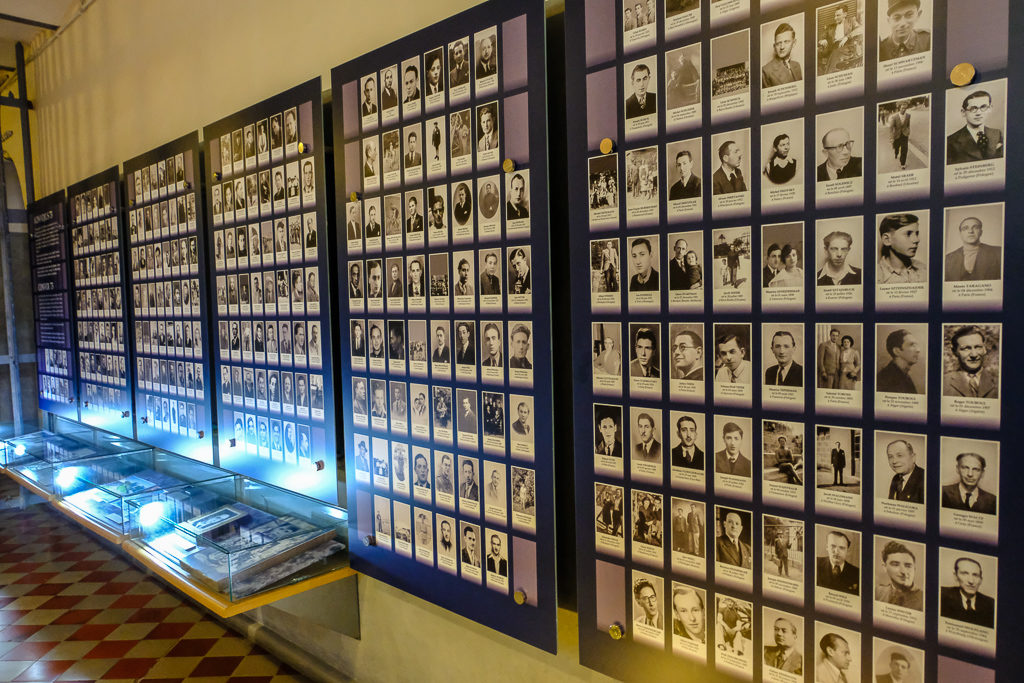
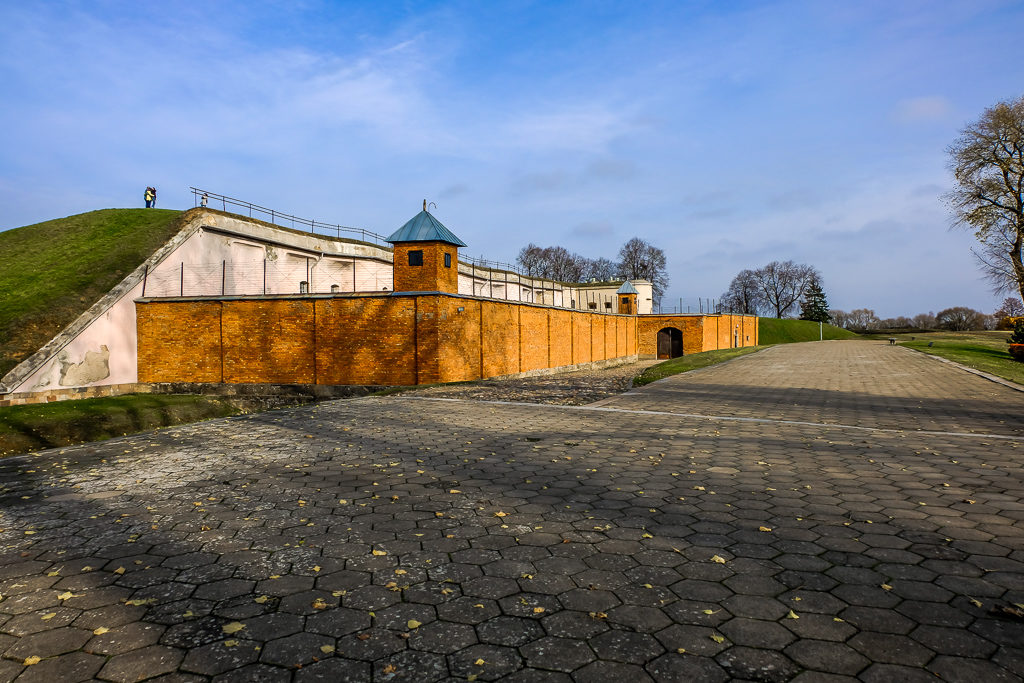
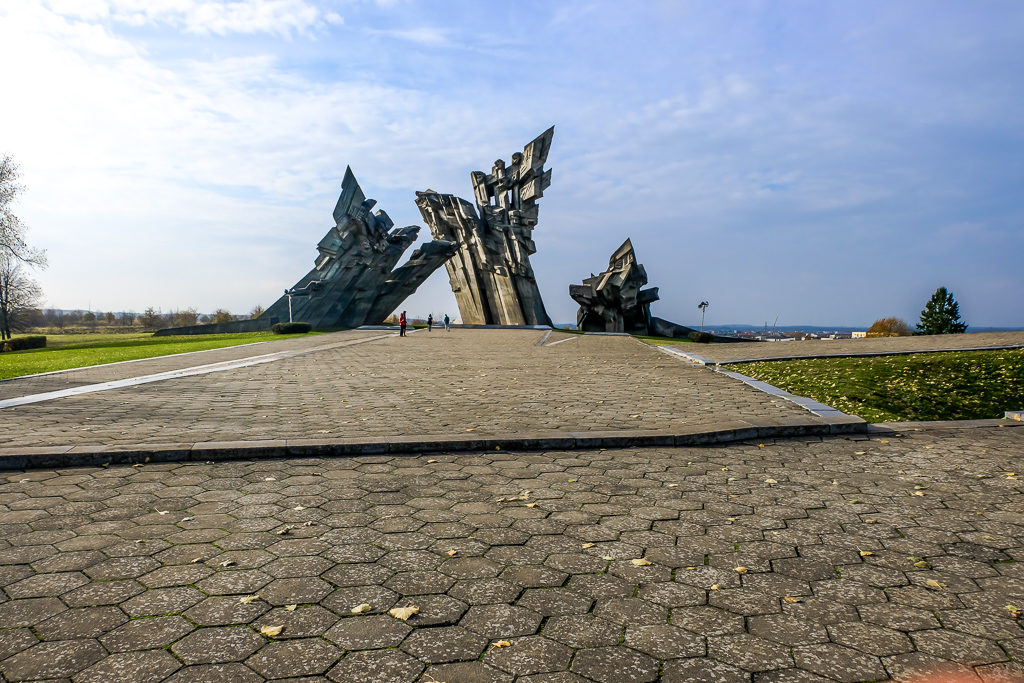
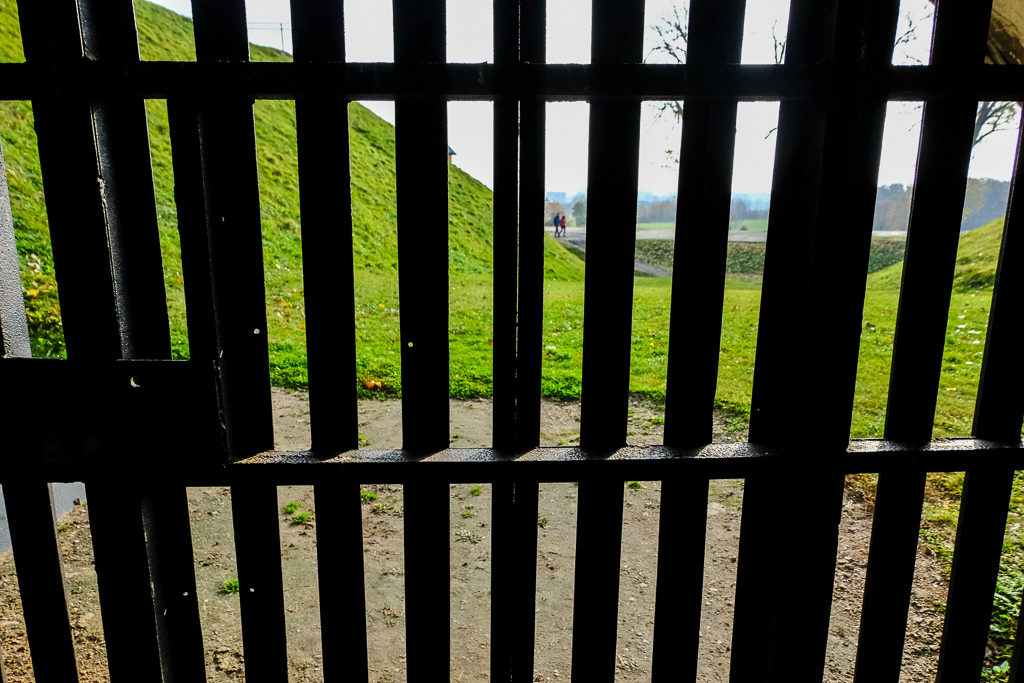
Sugihara house
After the ninth fort we went to the Sugihara house museum, telling the story of Chiune Sugihara. Sugihara is a Japanese diplomat sent to Kaunas for a year to gather information for the Japanese, but who used his station to save thousands of Lithuanian and Polish Jews by producing visas for passage through Japan.
At first, the museum only had one floor, but it was expanded afterwards. On the second floor are explanations about Kaunas under the Soviet and Nazi rules, so people can understand the history behind what happened in the city.
After the ninth fort it was nice to visit a place that gives you hope in humanity and shows people who gave their lives for others. I recommend reading the story about Sugihara, and if you’re in Kaunas, visit the museum. Map.
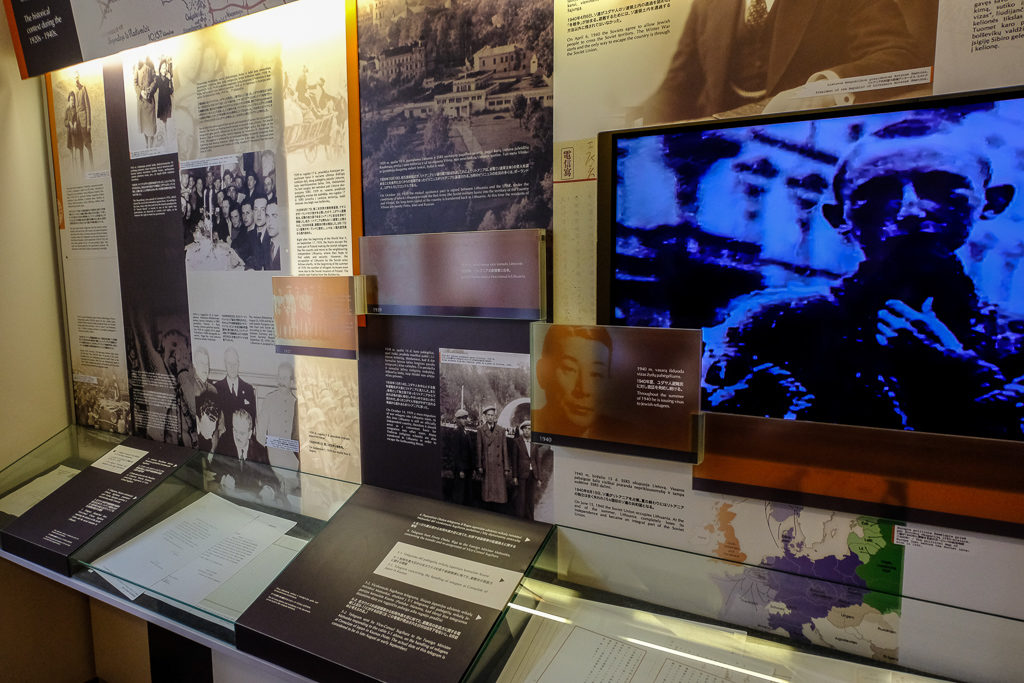
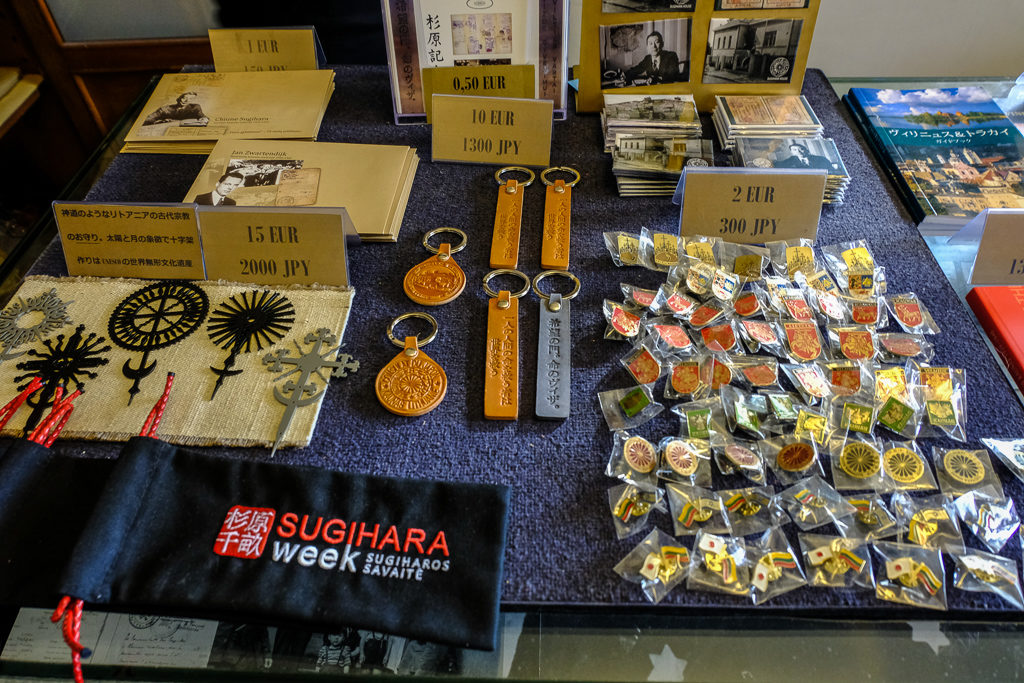
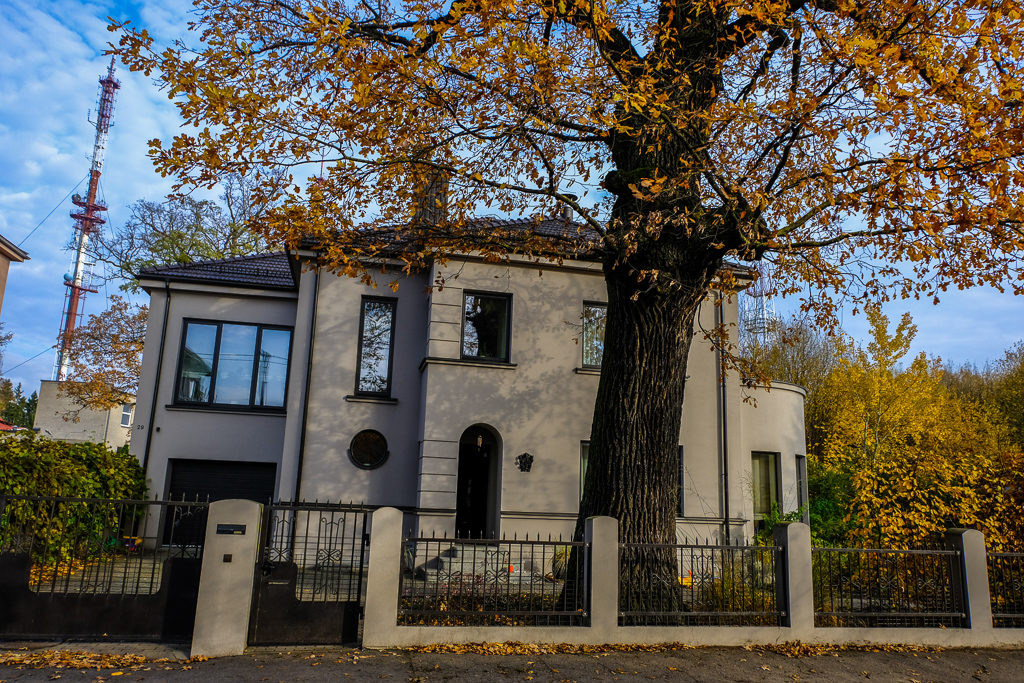
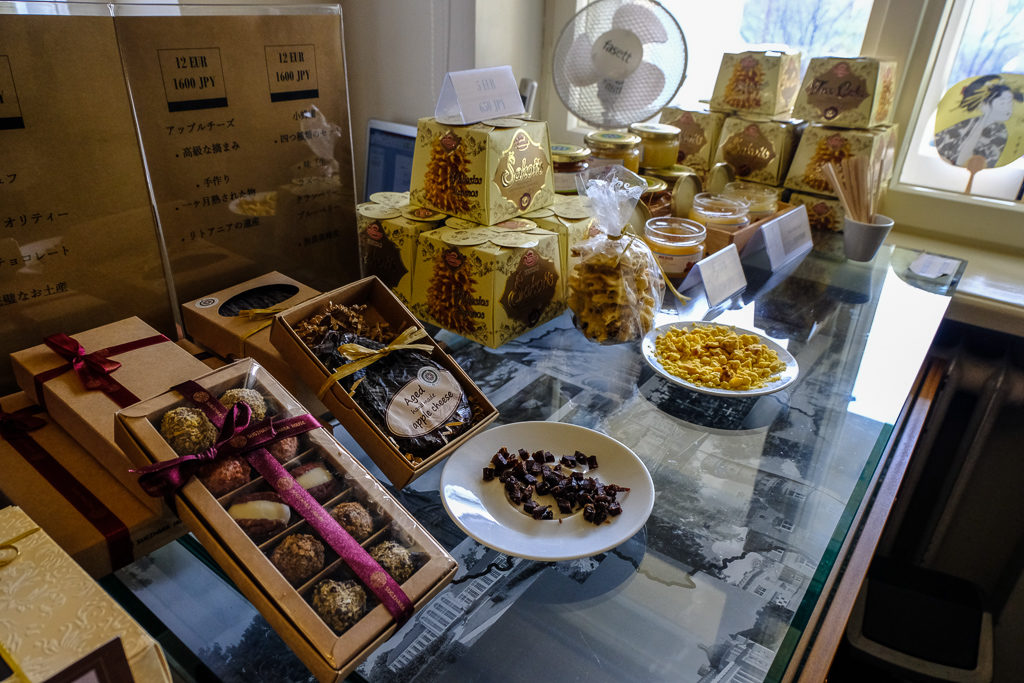
Kaunas Lagoon Beach
Kaunas Lagoon (Kauno Marios), the largest artificial lake in Lithuania, is a popular spot near Kaunas for outdoor activities like walking, water sports, boating, and fishing. It’s surrounded by the Kauno Marios Regional Park, offering scenic views and attractions like the Baroque-style Pažaislis Monastery on its shore.
It’s a lovely lake that even has a beach. If you’re coming during the summer I recommend visiting it. You Can swim in the lake or tan on the beach, and there’s a small playground there. (Map)
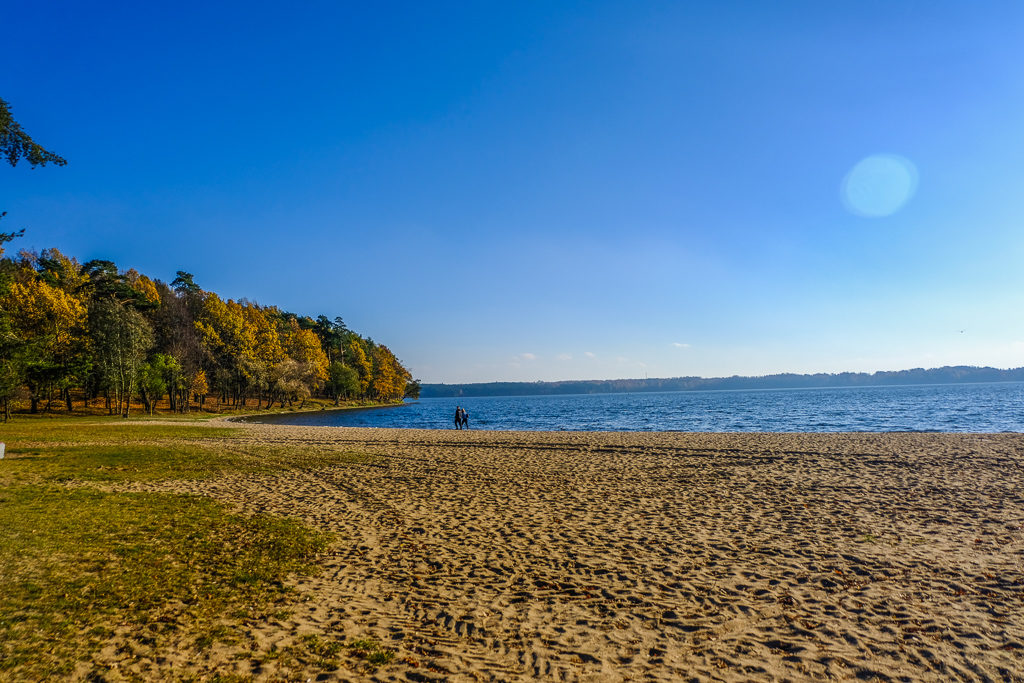
Kaunas is a city full of history, culture, and unique traditions, making it a fantastic destination for travelers. From the charm of the old town and the scenic views of the Kaunas Lagoon to the deep historical significance of sites like the Ninth Fort and the Sugihara House, there’s so much to explore. Whether you’re visiting the candle-lit cemeteries on All Saints’ Day, experiencing local art and crafts, or learning about Lithuania’s Jewish history, Kaunas offers a rich and varied experience. It’s a city that combines the old and the new, offering something for everyone to appreciate, making it a place well worth discovering.
I hope my post helped you. If so, I would very much like you to respond here in the comments, and if you have any more questions, then you are also welcome to ask them in the comments or on the blog’s social networks: Facebook and Instagram. Looking for more information about Lithuania? I have in the blog more posts about Lithuania.
Pin below to save on Pinterest
